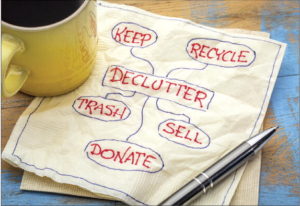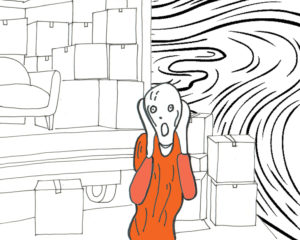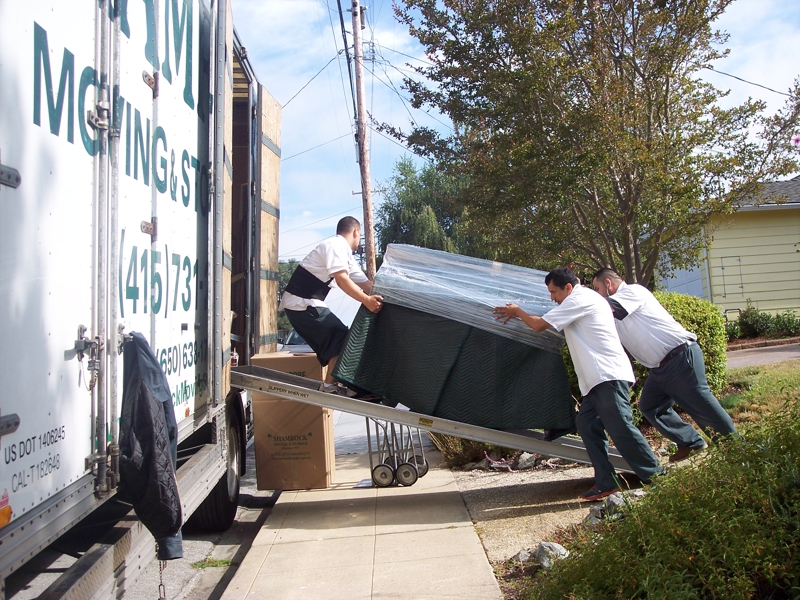Is the stuff in your home stealing your space? If so, you are living with a space-thief.
In the San Francisco Bay Area, the average cost per square foot of space is upwards of $250. That means if you have a clutter, your space thief is doing a thriving business!

Everyone has some degree of attachment to their possessions; An old desk belonging to your great grandmother; A collection of figurines, each one representing a different travel experience you took with with your mother, now gone; Photo albums of your childhood, your ancestors and now your own children and grandchildren.
I am not suggesting, whatsoever, that you let go of the things that give meaning to your life. But consider this: What if those meaningful items are stored in your basement, garage or attic, amidst the debris of old moldy boxes, sporting gear you haven’t used since 1987, and a shelf full of rusted, empty paint cans?
If you’ve maxed out your storage in the living areas of your home with stuff you don’t even care about, you are living with a thief, a space-thief. The space-thief is stealing your space, by replacing it with clutter, you don’t want or need.
It’s time to take back your home from the space-thief!
I’ve come to appreciate the term “curate” instead of declutter. It implies something less negative, less demeaning about the things we keep.
The word curate, comes from the latin word cur meaning “care.” A Curate, according to it’s original meaning, was a member of the clergy who took care of the parish. Later, the term curator came to mean one who was charged with the care of something, such as an exhibit, museum or collection.
Approach every clutter issue as an opportunity to be a curator for your own home or office. In organizing terms, think of your home as you might think of a museum or art gallery. The value of your home’s contents isn’t defined solely by its market value. There is also value when you can use and enjoy what you own.
A museum or gallery has storage areas to preserve, protect or restore items, typically not open to the public, but it’s the galleries, exhibitions and public spaces that are enjoyed and worth seeing. If your home is more of a storage area than a place to enjoy, you’ve been robbed – by the space-thief.
Here are some ways you can approach your home as a curator and protect yourself from the space-thief in your home:
- Sort and categorize items according to type or theme and then decide which are the ones that best fit the theme, spark joy or hold meaning for you now. I once had a client who loved vintage kitchen tools. She had a great collection of vintage egg beaters. Instead of having them stored in a box, she eliminated the duplicates, let go of those not worth repairing and then kept her favorites. The result was a whimsical display that made her vintage kitchen not just functional but a fun place to cook!
- Consider a “bequest” of things you no longer value yourself to others you know (or don’t) for the joy of giving. Offer unwanted items to a specific individual by a specific date. Don’t just put it in a “gift” bin. If they pass or don’t meet your deadline, you can opt to donate it to someone else or to charity. Just don’t let it stay too long once you’ve decided to let it go. Doing so, is like giving it away to the clutter-thief.
- Choose which items you want to share with your family, friends or simply enjoy yourself and determine the best home and way to display them. If it’s worth keeping, it’s worth using, sharing or enjoying. If it’s surplus – then decide where you will store your “surplus” but know that keeping too much surplus, just in case, is also the same as giving it to a space-thief.
- Beware of counterfeit items you thought had value to you, because you’ve kept them, and realize they are actually just stealing space from your home (or office). An old client had kept a valuable desk belonging to her ex-husband. She never liked it and now she was forced to see it every day, which only brought up unpleasant memories. Even when something has market value, if it is stealing space and joy from you, it is not worth keeping. She sold it and used the money to buy herself a desk she could truly call her own.
- Take time or get help to contain, display and safeguard your contents for their safety and protection as well as for your own. If your valuables are buried in a pile of clutter on the floor, not only are they at risk of damage but one false step and you could be out of commission yourself.








